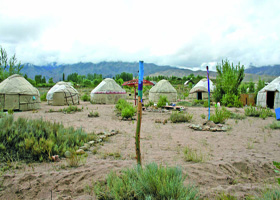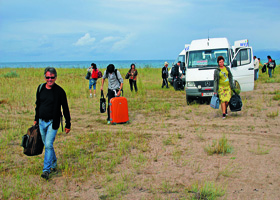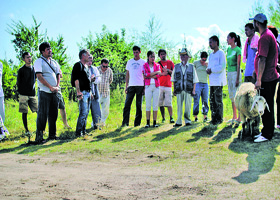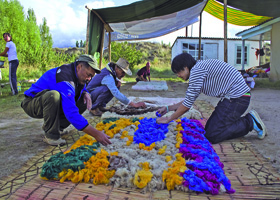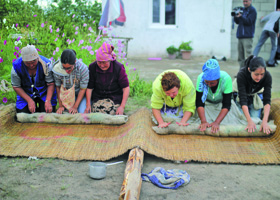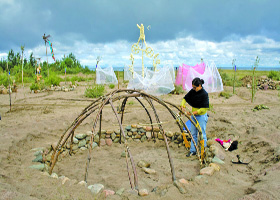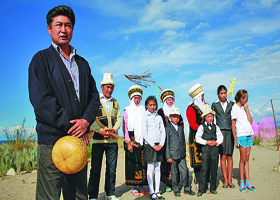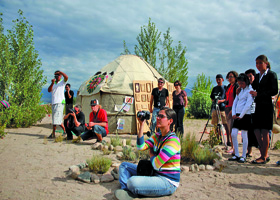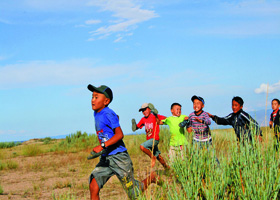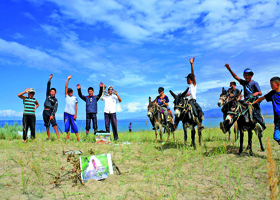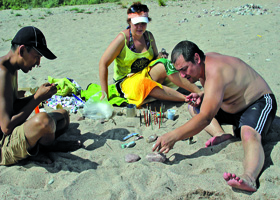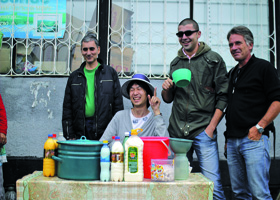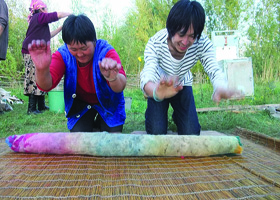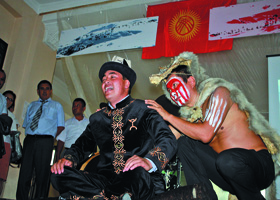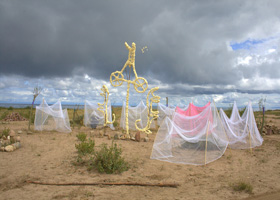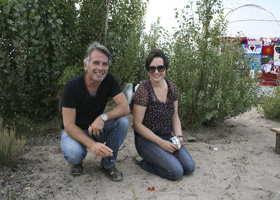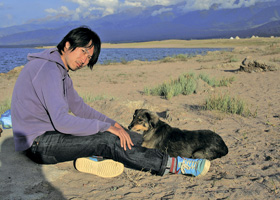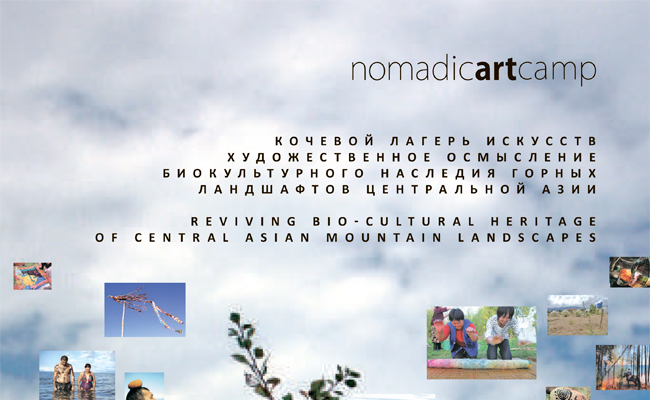2011 NOMADIC ART CAMP
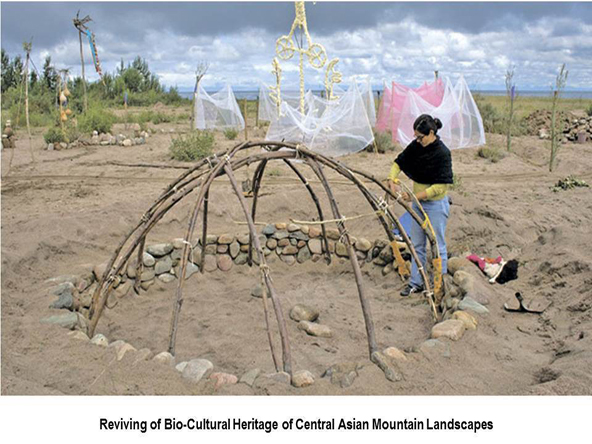
Nomadic Art Camp 2011: Reviving Biocultural Heritage of Central Asian Mountain Landscapes
This project was an initiative designed to bring together artists from diverse mountainous regions to Kyrgyzstan, providing a platform for fostering cultural diversity, collaboration, and raising awareness of the importance of preserving both cultural and natural heritage. Held in Kyrgyzstan’s mountainous landscapes, the project sought to explore and revitalize the region’s biocultural heritage, with a specific focus on the interplay between art, environment, and traditional knowledge.
The inaugural Nomadic Art Camp took place on the southern shores of Issyk-Kul Lake, nestled in the breathtaking Ala-Too foothills, a region renowned for its natural beauty and rich cultural legacy. Artists from Kyrgyzstan, Kazakhstan, Tajikistan, Turkey, Mexico, France, Germany, Spain, and Japan gathered in this unique setting to engage with the traditional nomadic way of life. Living in yurts, participants were fully immersed in the local culture, working with indigenous materials to create their artworks. The camp created an environment conducive to intellectual exchange, with artists collaborating closely over two weeks. This setting encouraged the exploration of biocultural heritage, the environment, and the intersection of tradition and contemporary art.
While the exploration of biocultural heritage proved to be enriching, the project encountered several challenges. Central Asia’s contemporary art scene, shaped by recent political events, often centered around politically charged themes, which posed a challenge for local artists who were unfamiliar with the intellectual discourse surrounding biocultural heritage. Additionally, the concept of biocultural heritage itself was underexplored in the region, making it difficult for artists to fully express this theme in their works.
The second phase of the project included a video festival held at the Republican House of Cinema, which showcased video art, animation, and short documentaries addressing cultural diversity and biocultural heritage from both local and international perspectives. This event not only raised awareness but also attracted specialists and media attention, offering an opportunity for continued discourse on the preservation of biocultural diversity in the region.
The project culminated in a final exhibition at the Kyrgyz National Agrarian University, where the artworks created during the camp were displayed. The exhibition highlighted the critical role of nomadic heritage in shaping the self-identity and cultural preservation of the Kyrgyz people, as well as other nomadic cultures across the globe. By integrating traditional practices with contemporary artistic expressions, the exhibition emphasized the importance of revitalizing biocultural heritage through art. The event also provided a space for dialogue, connecting artists, local communities, and cultural experts, and reinforcing the significance of nomadic traditions in the modern world.
Through this initiative, the Nomadic Art Camp succeeded in both reviving and celebrating the cultural heritage of the region. It also fostered deeper connections between art, the environment, and the people of Central Asia. The project not only created an international platform for intellectual exchange and artistic collaboration but also encouraged the integration of sustainable practices and cultural preservation in contemporary art. By fostering mutual understanding and promoting cross-cultural dialogue, the camp set the stage for ongoing exploration of biocultural heritage, environmental conservation, and the role of traditional knowledge in the modern world.
The Nomadic Art Camp 2011 was a significant milestone in the effort to bridge contemporary art with traditional cultural practices. It demonstrated how art can be a powerful tool for preserving biocultural heritage while addressing global environmental and cultural challenges. Through collaboration, dialogue, and creative expression, the project succeeded in forging lasting connections between artists and local communities, advancing the cause of cultural preservation in Central Asia and beyond.
Artistic Direction and Curatorial Leadership: Shaarbek Amankul
co-curator: Gamal Bokonbaev
